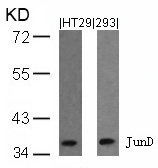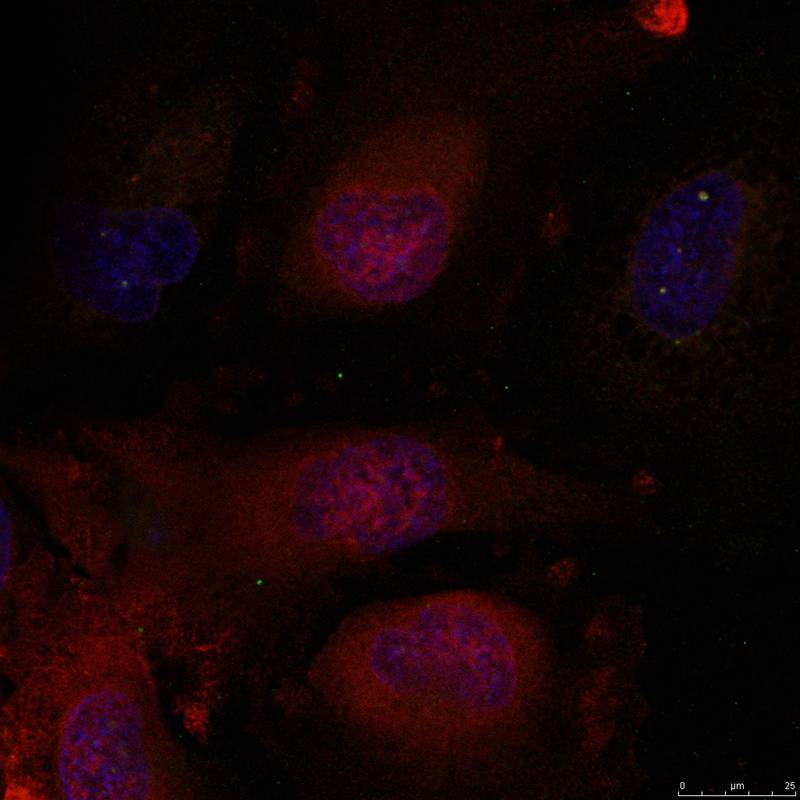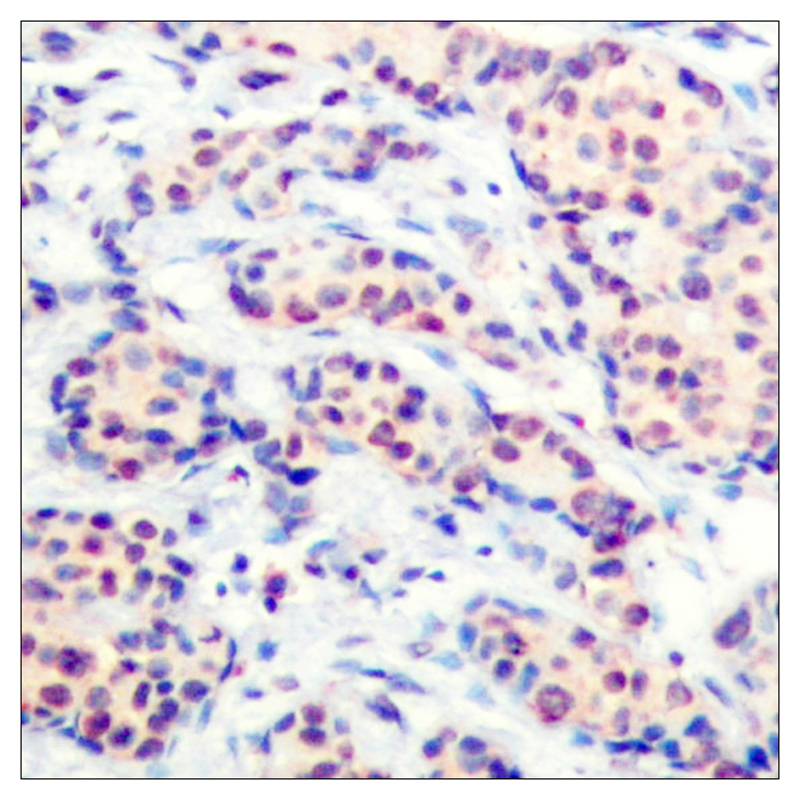


| WB | 咨询技术 | Human,Mouse,Rat |
| IF | 咨询技术 | Human,Mouse,Rat |
| IHC | 1/50-1/100 | Human,Mouse,Rat |
| ICC | 1/100-1/200 | Human,Mouse,Rat |
| FCM | 咨询技术 | Human,Mouse,Rat |
| Elisa | 咨询技术 | Human,Mouse,Rat |
| Aliases | AP-1 |
| Entrez GeneID | 3727; |
| WB Predicted band size | 38kDa |
| Host/Isotype | Rabbit IgG |
| Antibody Type | Primary antibody |
| Storage | Store at 4°C short term. Aliquot and store at -20°C long term. Avoid freeze/thaw cycles. |
| Species Reactivity | Human,Mouse,Rat |
| Immunogen | Peptide sequence around aa. 253~257 (G-E-S-P-P) derived from Human JunD. |
| Formulation | Purified antibody in PBS with 0.05% sodium azide. |
+ +
以下是关于JunD (Ab-255)抗体的示例参考文献(注:实际文献可能需要根据具体数据库或供应商信息进一步验证):
---
1. **文献名称**: *JunD regulates proliferation and differentiation of prostate cancer cells through redox signaling*
**作者**: Smith A, et al.
**摘要**: 本研究利用JunD (Ab-255)抗体通过Western blot和免疫组化分析前列腺癌细胞中JunD的表达,发现JunD通过调控活性氧(ROS)水平影响细胞增殖和分化,提示其在癌症治疗中的潜在作用。
2. **文献名称**: *The role of JunD in oxidative stress-induced cellular senescence*
**作者**: Lee B, et al.
**摘要**: 通过免疫沉淀(ChIP)和敲除实验,结合JunD (Ab-255)抗体的应用,研究发现JunD在氧化应激诱导的细胞衰老中起保护作用,其缺失导致DNA损伤反应增强。
3. **文献名称**: *JunD deficiency promotes tumor angiogenesis via AP-1-dependent mechanisms*
**作者**: Garcia R, et al.
**摘要**: 使用Ab-255抗体检测小鼠肿瘤模型中JunD的表达,发现JunD缺失通过AP-1通路促进血管生成,揭示了其在肿瘤微环境中的调控机制。
4. **文献名称**: *JunD modulates neuronal apoptosis in Parkinson’s disease models*
**作者**: Chen L, et al.
**摘要**: 在帕金森病细胞模型中,通过免疫荧光和Western blot(使用JunD Ab-255抗体)证实JunD通过调控Bcl-2家族蛋白抑制神经元凋亡,为神经退行性疾病提供新靶点。
---
**注意**:上述文献为示例性质,实际引用需查询具体数据库(如PubMed、Google Scholar)或抗体供应商(如CST、Abcam)提供的参考文献列表。部分文献可能未明确标注抗体编号,需结合实验方法部分确认。
JunD (Ab-255) is a polyclonal antibody specifically designed to recognize the JunD protein, a member of the activator protein-1 (AP-1) transcription factor family. JunD, along with other AP-1 components like c-Jun and JunB, plays a critical role in regulating gene expression involved in cellular processes such as proliferation, differentiation, apoptosis, and stress responses. The antibody is generated by immunizing animals with a synthetic peptide corresponding to a conserved region of the JunD protein, ensuring specificity against JunD while minimizing cross-reactivity with related family members.
Raised in rabbits, JunD (Ab-255) is commonly used in Western blotting, immunoprecipitation, and immunohistochemistry to detect endogenous levels of JunD in various biological samples, including cell lysates and tissues. Its validation in multiple applications highlights its reliability in both qualitative and semi-quantitative analyses. The antibody’s specificity is often confirmed through knockout or knockdown controls, demonstrating minimal background signal in the absence of JunD.
JunD itself is notable for its context-dependent roles—acting as both a tumor suppressor and oncogene in different cancers—making this antibody a valuable tool in cancer research, developmental biology, and studies of cellular signaling pathways. Proper storage conditions (typically at -20°C) are recommended to maintain antibody stability and performance over time. Researchers frequently use JunD (Ab-255) to explore mechanisms underlying gene regulation, stress adaptation, and disease progression, underscoring its versatility in both basic and translational research.
×